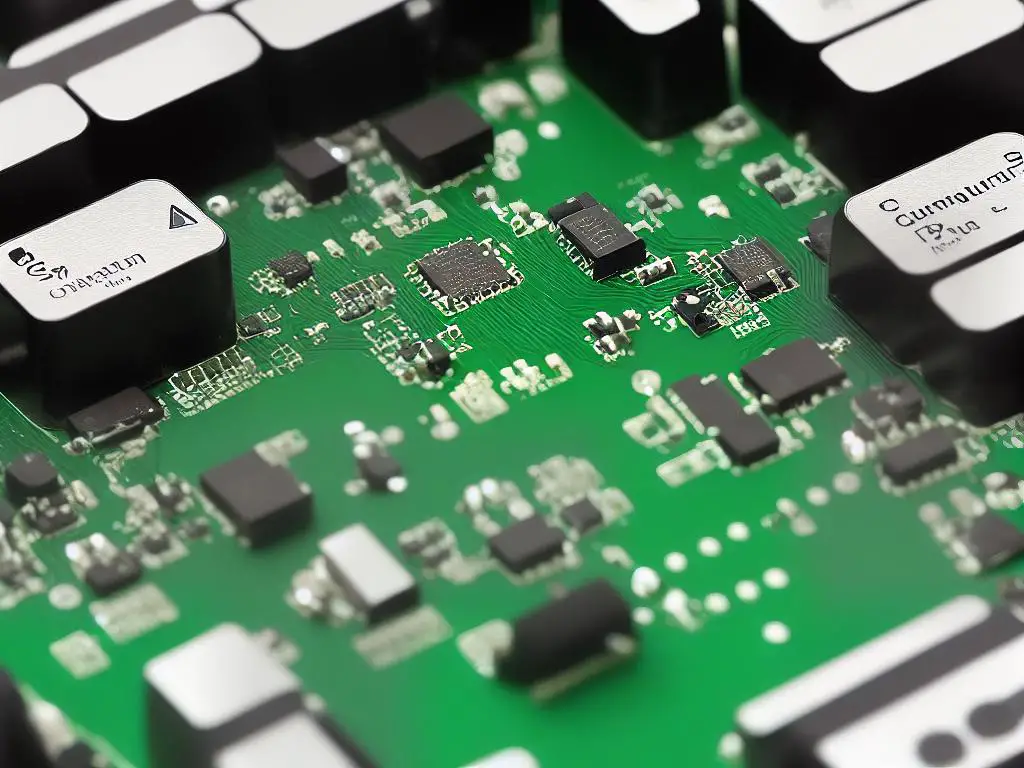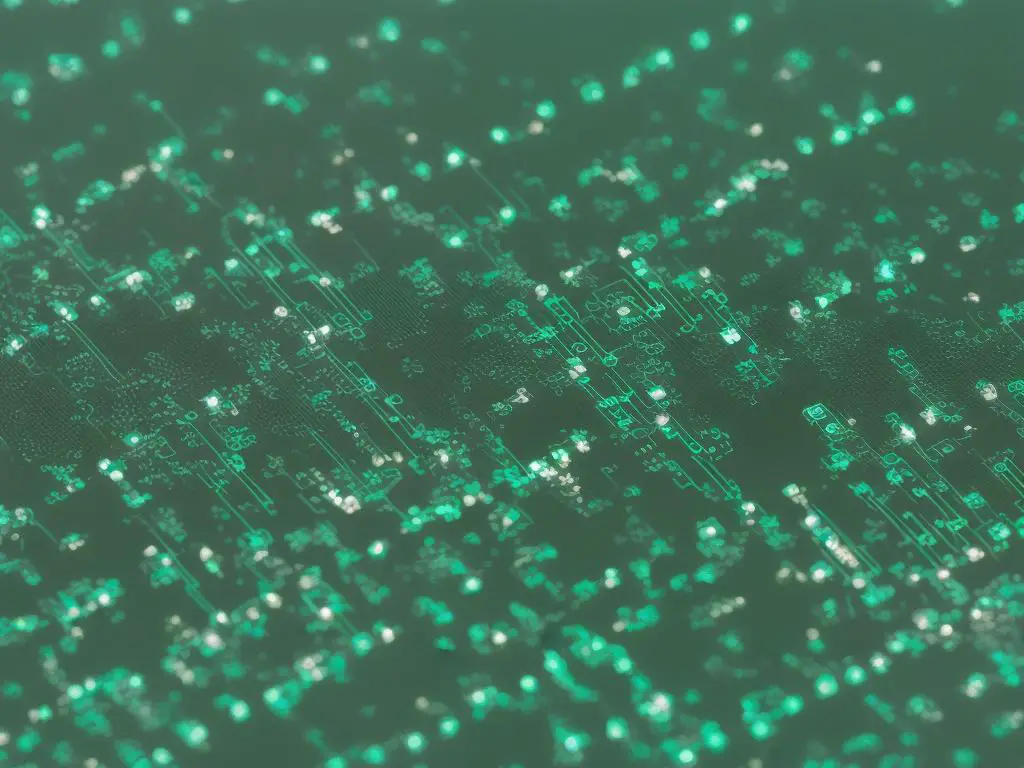Quantum computing, a fascinating field that combines principles of theoretical physics, computer science, and mathematics to enable the creation of computing systems that can process data exponentially faster than traditional computers.
From the early days of quantum theory to the breakthrough algorithms and technologies of today, quantum computing has undergone significant evolution and piqued the interest of enthusiasts and hobbyists alike. The following discussions provide an in-depth look at the history, fundamentals, and applications of quantum computing, as well as the challenges and future outlook of this remarkable field.
History of Quantum Computing
Table of Contents
- 0.1 History of Quantum Computing
- 0.2 Quantum Bits (Qubits)
- 0.3 Quantum Gates and Circuits
- 0.4 Quantum Algorithms
- 0.5 Quantum Programming Languages
- 0.6 Quantum Error Correction
- 0.7 Current Quantum Computing Technologies
- 0.8 Applications of Quantum Computing
- 0.9 Challenges and Future Outlook
- 1 Scalability Challenges
- 2 Error Rates and Mitigation Techniques
- 3 Commercialization Hurdles
- 4 Promising Future Outlook
Quantum computing traces its origins back to the early 20th century when physicists such as Albert Einstein, Max Planck, and Niels Bohr were grappling with the principles of quantum mechanics. During this time, breakthroughs in our understanding of the subatomic world were being made, which laid the foundation for quantum computing.
It wasn’t until the 1980s, however, that the concept of a quantum computer began to take shape. Theoretical physicist Richard Feynman, known for his work in quantum mechanics, proposed the idea of using quantum systems to simulate quantum mechanics in a more efficient way than classical computers. This marked the beginning of the field of quantum computation.
Throughout the 1990s and into the early 2000s, the implementation of Feynman’s ideas became a reality as researchers began to develop the necessary technology to manipulate individual quantum bits (qubits). This period also saw the emergence of important quantum algorithms that demonstrated the potential for quantum computing to surpass classical computing in specific tasks.
The most notable of these algorithms was developed by Peter Shor in 1994. Shor’s algorithm, designed to factor large integers into their prime components, illustrated the possibility of a quantum computer solving a computationally intensive task exponentially faster than a classical computer.
In the years that followed, many advances have been made in building rudimentary quantum computing hardware. Significant work has been done in developing various qubit technologies, such as ion trap qubits, superconducting qubits, and topological qubits.
These technologies, each with their own benefits and challenges, have allowed researchers to create increasingly stable and functional quantum computers. Companies like IBM, Google, and Rigetti Computing are now offering cloud-based access to prototype quantum processors, which allows researchers and hobbyists alike to explore quantum algorithms and applications further.
A key milestone in the development of quantum computing came in 2019, when researchers at Google announced that they had achieved something known as ‘quantum supremacy,’ which refers to a quantum computer’s ability to perform a task that classical computers cannot reasonably do.
Google’s 53-qubit, superconducting quantum computer, called Sycamore, performed a specific calculation in just 200 seconds, a feat that would take a state-of-the-art classical supercomputer approximately 10,000 years to replicate. While this demonstration was limited to a very specific task, it signified an important step toward realizing the potential of quantum computing.
Quantum computing is a rapidly developing field that has captured the enthusiasm of researchers, hobbyists, and the scientific community alike. With ongoing efforts to overcome technical challenges and build larger, more stable quantum processors, new algorithms and potential applications are continuously being discovered.
This innovative and potentially revolutionary field has also become accessible to enthusiasts through cloud-based platforms, allowing them to engage in quantum computing experiments and contribute to the growing knowledge in this area.
Quantum Bits (Qubits)
At the core of quantum computing are quantum bits, or qubits, which serve as the fundamental building blocks for this technology. The unique properties of qubits are what sets them apart from classical bits, which are used in traditional computing.
Unlike classical bits that can only be in the binary states of 1 or 0, qubits can exist in multiple states at the same time. This crucial difference is what gives quantum computing its incredible potential for vastly increased computational power and efficiency, opening up a realm of exciting possibilities for hobbyists and experts alike to explore.
This unique characteristic of qubits is described as superposition. In contrast to classical bits, which exist exclusively in either a 1 or 0 state, qubits can exist in a linear combination of both states, often denoted as |0⟩ and |1⟩.
Mathematically, this can be expressed as α|0⟩ + β|1⟩, where α and β are complex numbers and the probabilities of finding the qubit in either state are given by |α|^2 and |β|^2, respectively. This property allows quantum computing to consider numerous scenarios simultaneously, dramatically increasing the speed at which computations can be made, especially for certain types of problems.
Another key principle governing the behavior of qubits is the concept of entanglement. Entanglement refers to a phenomenon where two or more qubits become insurmountably interconnected, such that the quantum state of one qubit cannot be described independently of the other(s).
They form a single, correlated system, regardless of their physical separation, and measuring one entangled qubit immediately determines the state of the other. This phenomenon allows for the parallel processing of information, creating the potential for remarkably efficient algorithms in quantum computing.
One area where the unique capabilities of qubits show significant promise is in the field of cryptography. Traditional computing faces substantial difficulties when it comes to cracking modern cryptographic codes, with many techniques relying on enormously time-consuming processes.
However, qubits, harnessing the power of superposition and entanglement, can drastically accelerate the speed at which these complex problems are solved. This could revolutionize secure communications, opening the door to the development of exponentially more effective encryption techniques.
Quantum computing holds incredible potential, but there are still many obstacles to overcome before practical implementation can be realized. Harnessing the power of qubits requires maintaining extremely fragile quantum states, which can easily be disrupted by environmental factors such as temperature and electromagnetic interference.
Additionally, scaling quantum systems has proven exceptionally challenging, often referred to as the ‘quantum hardware crisis.’ Despite these hurdles, researchers continue to make progress in overcoming these barriers, bringing us closer to unlocking the transformative potential of qubits and quantum computing.

Quantum Gates and Circuits
In order to manipulate and process quantum information within these quantum computers, quantum gates and circuits play a fundamental role. These components parallel the logical gates used in classical computing to perform operations on bits. Quantum computing, however, employs quantum gates to execute operations on quantum bits, or ‘qubits.’
These qubits possess the unique ability to exist in a superposition, meaning they can be in a combination of two states simultaneously. This property enables quantum computers to perform calculations exponentially faster than their classical counterparts, making them potentially transformative in a wide range of applications.
One of the primary quantum gates is the Pauli-X gate, which is analogous to the classical NOT gate. It flips the two basis states of a qubit, changing the state from |0⟩ to |1⟩ and vice versa.
Another fundamental gate is the Hadamard gate, which transforms the qubit from a definite state to a superposition of states, enabling quantum parallelism. For instance, when a Hadamard gate is applied to a qubit in state |0⟩, the resulting state is (|0⟩ + |1⟩)/√2 – an equal superposition of both basis states.
Controlled gates play a crucial role in quantum computing as they enable entanglement – a unique property of quantum mechanics that allows particles to be correlated even when separated by vast distances. The most common controlled gate is the Controlled-NOT (CNOT) gate, which operates on a pair of qubits, controlling one qubit depending on the state of the other.
When the control qubit is in state |1⟩, the target qubit undergoes a Pauli-X operation. When the control qubit is in state |0⟩, the target qubit remains unchanged.
Just like assembling classical gates to create a classical circuit, one can combine multiple quantum gates to form a quantum circuit. A significant advantage of quantum circuits compared to classical circuits is that they can describe complex algorithms in fewer steps, thereby vastly improving computational efficiency.
For instance, Shor’s algorithm, which factors large numbers efficiently, uses a combination of quantum gates and circuits to achieve a runtime much faster than the best-known classical algorithms.
Aspiring quantum computing enthusiasts and hobbyists can start by mastering the fundamental quantum gates, such as the Pauli-Y, Pauli-Z, T-gate, and S-gate. These gates apply specific transformations to qubits, which are essential in building and understanding quantum circuits.
As the field of quantum computing advances, new techniques and applications involving these gates and circuits will emerge, providing expanded possibilities for those skilled in their operations.

Quantum Algorithms
One noteworthy example of quantum computing’s potential is Shor’s Algorithm. Developed in 1994 by Peter Shor, this groundbreaking quantum algorithm solves the integer factorization problem in polynomial time – a task that challenges even the most advanced classical computers.
Shor’s Algorithm highlights the potential vulnerabilities of modern cryptographic techniques, which rely heavily on the difficulty of factoring large numbers. As practical quantum computers come to fruition, traditional cryptographic methods may become obsolete, since Shor’s Algorithm can break them in a significantly reduced time frame.
Grover’s Algorithm, developed by Lov Grover in 1996, is another essential quantum algorithm with wide-ranging practical applications. This algorithm serves as a quantum search algorithm, capable of efficiently finding a target element within an unsorted database.
Grover’s Algorithm outperforms any classical search algorithm, as it can locate the target element in a database of N items using only O(√N) queries, compared to the O(N) queries needed for classical linear search algorithms. This speedup is particularly relevant for searching large databases and optimizing the efficiency of various processes that rely on search operations.
Quantum machine learning techniques represent a promising area of quantum algorithm research, with the potential to revolutionize how we analyze, classify, and predict data. These techniques often apply quantum computing principles to existing machine learning algorithms, such as support vector machines, neural networks, and principal component analysis.
By harnessing the unique capabilities of quantum computing, such as quantum entanglement and superposition, these quantum algorithms can process vast amounts of data simultaneously and rapidly. This can lead to accelerated training speeds and improved model accuracy, opening new possibilities in the realm of artificial intelligence and big data analytics.
The potential impact of quantum algorithms on fields such as cryptography, searching, and machine learning has shown the transformative power of quantum computing. As researchers continue to develop increasingly sophisticated quantum algorithms, many complex problems are becoming more solvable by quantum methods.
This not only shapes the future of computation, but also affects society and how we approach a variety of challenges, from securing our online communications to understanding complex, interconnected systems. Each new quantum algorithm discovery brings us closer to fully realizing the immense potential quantum computing has to offer.

Quantum Programming Languages
In support of the progress in quantum computing research and development, quantum programming languages have emerged as essential tools to write and implement quantum algorithms on quantum computers.
Popular languages such as Q#, Quipper, Qiskit, and Cirq have been created specifically to cater for the unique needs of quantum development. Equipped with various libraries, utilities, and tools, these languages allow users to efficiently develop, test, and optimize their quantum algorithms and applications, seamlessly connecting the theoretical concepts of quantum computing to the practical implementation of its promising future.
Q# is an open-source high-level quantum programming language that is specifically designed for expressing and developing quantum algorithms. It is integrated with Visual Studio and the Quantum Development Kit (QDK), making it easy to use and debug.
Q# supports rich quantum operations, managing qubits, and simulating noise, among other capabilities. It is considered one of the most mature and practical quantum programming languages, with an active community and good documentation.
Quipper is another open-source, scalable quantum programming language that is integrated with the Haskell language. It focuses on being a functional programming-based language, which allows for more composability and modularity.
Quipper has been used to design and simulate several complex quantum algorithms and circuits, such as quantum factoring algorithms, quantum chemistry simulations, and quantum error correction. Its features, such as the ability to use quantum data types and automatic circuit generation, make it attractive for advanced users and researchers who want to explore quantum computing in-depth.
Qiskit is an open-source Python library for quantum computing, designed to be extensible and modular. With Qiskit, developers can create and manipulate quantum circuits, compile them into quantum circuits for specific hardware, and run them on real quantum computers or simulators.
Qiskit has a rich ecosystem of tools, libraries, and notebook-based tutorials, making it accessible to both quantum computing beginners and experts. Additionally, Qiskit provides integration with IBM’s Quantum Experience platform, giving users access to IBM’s quantum hardware for testing and benchmarking their algorithms.
Cirq is an open-source Python library used to create, edit, and invoke quantum circuits. Focused on designing algorithms for near-term quantum computers, Cirq emphasizes noise modeling and optimization techniques. The library includes native support for Google’s quantum hardware, allowing users to run their quantum circuits on Google’s cloud-based quantum processors.
Cirq also provides a platform for researchers to share and collaborate on quantum algorithms, enabling a faster advancement in the field of quantum computing.
Forest is a versatile platform designed for programming and executing quantum algorithms, offering a seamless experience for enthusiasts and hobbyists looking to develop their skills in quantum computing.
The open-source Python library, PyQuil, simplifies the creation and manipulation of quantum circuits. Additionally, Forest grants access to Rigetti’s quantum hardware through their Quantum Cloud Services, allowing users to run their algorithms on real quantum processors. This comprehensive platform enables smooth transition between designing, simulating, and executing quantum circuits across both classical and quantum hardware.

Quantum Error Correction
A key aspect to consider while mastering quantum computing is the role of quantum error correction, which combats the inherent susceptibility of quantum systems to noise and errors. Quantum bits, or qubits, are the basis of quantum computers, yet their delicate quantum states can be disrupted due to factors such as temperature fluctuations or imperfections in the quantum hardware.
Developing precise and robust error correction techniques is essential to ensure reliable quantum computations and optimal system performance. As an enthusiast delving into quantum computing, understanding and applying these correction methods will be instrumental in your progress.
The primary challenge in quantum error correction is the unique nature of qubits, which exhibit quantum superposition and entanglement, making the detection and correction of errors more complicated than in classical computing systems.
Unlike binary bits, qubits can undergo phase and amplitude errors, which are usually described as bit-flip and phase-flip errors. Therefore, quantum error correction codes must be designed to handle both types of errors while preserving the space of possible quantum states.
One of the pioneering approaches to quantum error correction is the Shor code, introduced by Peter Shor in 1995. This is a nine-qubit code capable of correcting both bit-flip and phase-flip errors in a single logical qubit by encoding it across multiple physical qubits.
While the Shor code provides a robust error-correction scheme, it comes with an overhead in terms of the number of additional qubits required to implement the code. Since then, various other error correction methodologies have been proposed, such as the surface code and the toric code, which seek to balance the trade-off between qubit overhead and error-correction capabilities.
Another essential aspect of quantum error correction is fault-tolerant quantum computation, which aims to design quantum circuits and operations that can withstand noise and errors without compromising the computation’s overall accuracy.
The goal is to ensure that the error correction process itself does not introduce additional errors into the system. Fault-tolerant quantum computation involves modifying the quantum circuits to minimize the propagation of errors and devising new error-correction schemes that can work in tandem with the modified circuits.
In recent years, substantial progress has been made in the field of quantum error correction research, as new techniques and hybrid approaches are continuously being proposed to address the challenges presented by noisy quantum systems.
For instance, the emergence of quantum machine learning algorithms has opened up new opportunities for error-correction schemes, harnessing the innate power of quantum computers to manage large-scale computational tasks.
As quantum computing continues its rapid evolution, quantum error correction remains a vital area of research, playing a pivotal role in the advancement and eventual success of this groundbreaking technology.

Current Quantum Computing Technologies
IBM has consistently been a pioneer in quantum computing development, providing an easily accessible platform for both enthusiasts and researchers to experiment with this revolutionary technology. Launched in 2016, the IBM Quantum Experience platform offers users a diverse range of quantum processors and simulators.
Through this platform, users can execute quantum algorithms on actual quantum hardware, allowing them to learn about and delve into the potential of this rapidly emerging field.
Google’s Quantum AI Lab is another notable player in the quantum computing landscape. The lab’s primary focus is on developing quantum processors and exploring their potential in solving complex problems that are practically unsolvable with classical computers.
In 2019, Google announced a significant milestone, demonstrating “quantum supremacy” with its 54-qubit Sycamore processor. This achievement showed that quantum computers could surpass traditional computers in solving specific problems, proving the viability of this transformative technology.
While IBM and Google are perhaps the most well-known entities in the quantum computing sphere, numerous other organizations and universities have also delved into this groundbreaking technology. For instance, Rigetti Computing is an American start-up known for developing scalable fault-tolerant quantum computers.
They have developed a cloud-based quantum computing platform called Forest, which allows quantum researchers and enthusiasts to experiment with Rigetti’s quantum hardware using a high-level programming interface.
In the academic realm, numerous universities are actively researching and developing quantum computing technology. Yale University’s Quantum Institute focuses on studying the principles of quantum information processing and exploring potential applications in quantum cryptography and quantum computing. Meanwhile, the University of Maryland’s Joint Quantum Institute is engaged in various research areas, including the development of quantum algorithms, error-correction techniques, and quantum communication protocols.
Quantum computing is an exciting and rapidly growing field, with numerous endeavors around the world aimed at advancing our understanding and use of this technology.
Among these are the Quantum Open Source Foundation, which fosters the development of open-source quantum software and tools, and the European Union’s Quantum Flagship initiative, a ten-year, billion-euro project that unites researchers and industry partners to develop and market quantum technologies.
As the field continues to progress, we can expect an expanding range of platforms and applications to emerge from researchers and organizations globally.

Applications of Quantum Computing
One of the most promising applications of quantum computing is cryptography, which has the potential to revolutionize data security and privacy. Traditional encryption methods, such as RSA and elliptic curve cryptography, depend on the difficulty of factoring large numbers or solving discrete logarithm problems.
However, quantum computers can execute these tasks exponentially faster than classical computers due to their inherent parallelism and the use of quantum algorithms, like Shor’s algorithm. As powerful quantum computers become a reality, existing cryptographic techniques may be rendered obsolete. This has spurred the development of new quantum-resistant encryption protocols to ensure the protection of sensitive information.
In the realm of optimization, quantum computing could have a significant impact on fields like logistics, finance, and energy management. Combinatorial optimization problems, which involve finding the most efficient way to allocate resources or the shortest path through a complex network, often scale exponentially with the size of the input data.
Quantum algorithms like Grover’s algorithm and the Quantum Approximate Optimization Algorithm (QAOA) offer the potential for significant speedup in solving these problems compared to classical methods.
This would enable organizations to optimize complex systems more effectively and make better-informed decisions, leading to improved operational efficiency and increased profitability.
Artificial intelligence and machine learning could also benefit enormously from quantum computing. Most machine learning algorithms rely on optimizing high-dimensional parameter spaces, which can be computationally expensive for large datasets.
Quantum-enhanced machine learning techniques like Quantum Support Vector Machines (QSVM) and quantum neural networks have the potential to process these large datasets more efficiently, leading to faster training times and improved prediction accuracy.
In addition, quantum computers could enable novel techniques for analyzing quantum data, thereby advancing our understanding of complex quantum systems and facilitating the development of new quantum technologies.
Materials science is another field poised to be transformed by quantum computing. The accurate simulation and modeling of molecules, proteins, and other complex systems is essential for the design of new materials with tailored properties for applications in areas such as renewable energy, healthcare, and electronics.
Classical simulation methods often struggle with predicting the properties of quantum systems, due to the exponential growth of possible quantum states. Quantum computers, however, can efficiently simulate these systems using algorithms like the Variational Quantum Eigensolver (VQE), leading to more accurate predictions and the discovery of new materials with unique properties and applications.
In the realm of pharmaceuticals, quantum computing holds the potential to completely transform drug discovery and the development of personalized medicine. By simulating the quantum interactions between molecules and their target proteins with remarkable accuracy, quantum computing can significantly reduce the time and costs associated with drug development.
This leads to more effective therapies and treatments for a variety of illnesses. In addition, quantum computing can aid in the analysis of complex genomic data, shedding light on the intricate relationships between genetics and disease.
As a result, this revolutionary technology paves the way for the creation of personalized therapies tailored to an individual’s specific genetic makeup, enabling more precise and effective medical interventions.

Challenges and Future Outlook
Scalability Challenges
In spite of its transformative potential, scalability remains a significant challenge in the field of quantum computing. Quantum computers depend on quantum bits, or qubits, which are highly sensitive to environmental factors.
This sensitivity makes controlling a large number of qubits increasingly difficult. In order to build practical quantum computers that can process substantial and meaningful data sets, it is essential to create and maintain stable qubits. As quantum computers are scaled up, an increasing number of qubits require precise control and isolation from environmental noise.
To tackle this challenge, researchers are actively exploring new hardware modifications and error-correcting strategies in the quest to unlock the full potential of quantum computing.
Error Rates and Mitigation Techniques
Another critical challenge in quantum computing is the high error rates associated with qubit manipulation. Due to the fragile nature of quantum states, even the slightest disturbance can lead to errors that propagate across the system and compromise the accuracy of results.
Several techniques have been proposed to mitigate the errors, such as quantum error-correcting codes and fault-tolerance algorithms. While the development of such error-mitigating techniques is still in the early stages, research into these areas is imperative for realizing practical quantum computing applications.
Commercialization Hurdles
Commercialization is another hurdle for quantum computing. Most quantum computing research is happening within academia and scientific institutions, and the transition from theoretical exploration to practical, marketable applications is not an easy or straightforward process.
Although several major technology companies, such as IBM and Google, are investing in quantum computing research with an aim to offer quantum computing services, refinement of applicable use-cases remains a challenge.
Moreover, ongoing research and development are met with funding and resource limitations that often hinder significant breakthroughs’ emergence.
Promising Future Outlook
Despite these challenges, the future outlook for quantum computing appears promising. Quantum computers have the potential to solve complex problems in various fields, from cryptography and finance to drug discovery and optimization tasks.
As advancements in materials science and engineering continue to improve qubit stability, researchers will likely find ways to increase the number of fault-tolerant qubits and thus progress towards more practical quantum computing applications.
Progress in quantum algorithms is another essential aspect of the field’s future outlook. As more researchers gain access to quantum computing resources, there will likely be an accelerated development of new applications and problem-solving techniques.
In essence, the more that challenges such as scalability, error rates, and commercialization are addressed, the more quantum computing can pave the way for significant breakthroughs in technology and science.

Photo by kohlun2000 on Unsplash
Through exploring the rich history, core concepts, and diverse applications of quantum computing, it is evident that this field holds tremendous potential for transforming numerous industries and scientific domains.
Although research continues to address the challenges of error correction, scalability, and commercial viability, the advancements made thus far in quantum technologies are a testament to human ingenuity and innovation.
As enthusiasts and researchers strive to unlock the full potential of quantum computing, the future of this field remains as enigmatic yet as promising as the quantum realm itself.

I’m Dave, a passionate advocate and follower of all things AI. I am captivated by the marvels of artificial intelligence and how it continues to revolutionize our world every single day.
My fascination extends across the entire AI spectrum, but I have a special place in my heart for AgentGPT and AutoGPT. I am consistently amazed by the power and versatility of these tools, and I believe they hold the key to transforming how we interact with information and each other.
As I continue my journey in the vast world of AI, I look forward to exploring the ever-evolving capabilities of these technologies and sharing my insights and learnings with all of you. So let’s dive deep into the realm of AI together, and discover the limitless possibilities it offers!
Interests: Artificial Intelligence, AgentGPT, AutoGPT, Machine Learning, Natural Language Processing, Deep Learning, Conversational AI.


